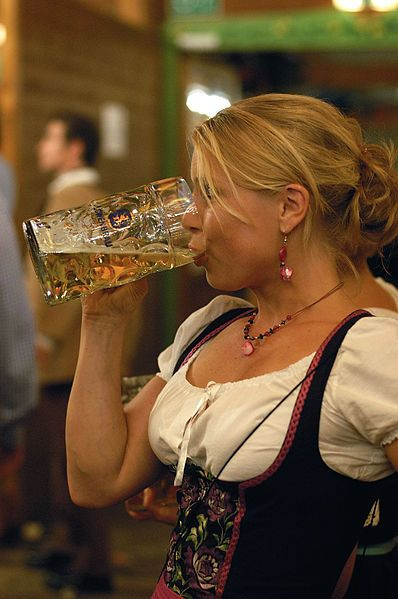Teen Drinking Among Girls Linked To Higher Risk Of Breast Cancer; Is There A Safe Limit For Consumption?

According to College Drinking, four in five college students drink, and about half of college student drinkers engage in heavy episodic consumption. Binge drinking has become a form of social engagement among college students who want to blow off some steam amid midterms and final exams. Men who consume five or more drinks in a row and women who consume four or more drinks in a row are labeled as binge drinkers. Young women who consume a bottle of beer, a glass of wine, or a shot of liquor per day between their first period and first full-term pregnancy increase their risk of breast cancer by 13 percent, according to a new study published in the Journal of the National Cancer Institute.
The researchers used data on 91,005 mothers enrolled in the Nurses’ Health Study (NHS) II from 1989 to 2009, who did not have a history of cancer prior to the study. In 1989, these women were asked to complete questions on early alcohol consumption and were followed-up on until 2009 to analyze their breast cancer risk. In addition, a subset of 60,093 women who did not have a history of benign breast disease (BBD) or cancer were followed from 1991 to 2001. The 60,093 women were included in the analysis of proliferative BBD.
Young women who consumed alcohol on a daily basis since early adolescence to their first full-term pregnancy were found to increase their risk of proliferative BBD by 15 percent. “Although such lesions are noncancerous, their presence increases breast cancer risk by as much as 500 percent,” said Ying Liu, M.D., Ph.D., one of the study's authors. Liu believes parents should educate their daughters about the effects of alcohol on breast tissue cells.
Benign breast lumps such as atypical hyperplasia — where breast cells are growing rapidly — increase the risk of breast cancer, according to Susan G. Komen for the Cure. Risk factors that increase the likelihood of developing a benign breast lump include menopausal hormone therapy, a family history of breast cancer or proliferative BBD, and alcohol consumption during adolescence.
The American Cancer Society says drinking alcohol can increase circulating estrogens or other hormones in the blood that can increase the risk for breast cancer. The breast tissue cells are especially vulnerable to carcinogens while they go through rapid growth during early adolescence and later throughout life.
Young women should drink less in order to lower their risk of breast cancer, believes Graham Coldtiz, M.D., DrPH, co-author of the study and associate director for cancer prevention and control at Siteman Cancer Center at Barnes-Jewish Hospital. "Reducing drinking to less than one drink per day, especially during this time period, is a key strategy to reducing lifetime risk of breast cancer," he said.
The study did not take into account the effect of school-age drinking and early-adulthood drinking on women who did not have a full-term pregnancy because there wasn’t a significant representative sample in the study.
In 2013, an estimated 1,660,290 men and women will be diagnosed with cancer, of which 580,350 will die of the disease, reports the National Cancer Institute.
To learn how you can nutritionally reduce your risk of cancer, click here.



























